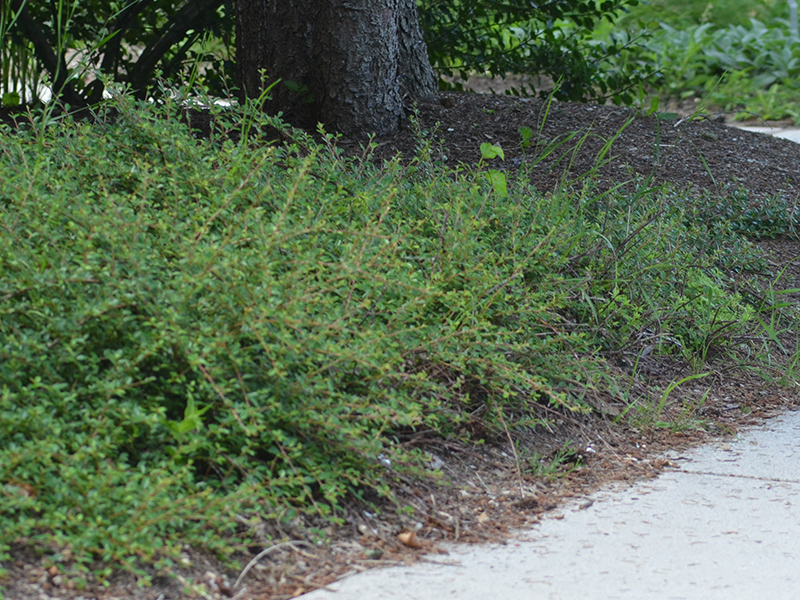| General Description | Similar to horizontalis, attractive green leaves and white bloom in March. |
| ID Characteristic | White flowers in spring with 5 petals, low growing evergreen to semi-evergreen. |
| Shape | Low growing, horizontally spreading. |
| Landscape | Used as a ground-cover or a mass planting plant. |
| Propagation | Stem cuttings. |
| Cultivation | Grow in full sun or partial shade. This plant will tolerate most soils. It may choke out surrounding plantings due to its vigourous growth. |
| Pests | Leaf miner. |
| Notable Specimens | The Gardens of Fanshawe College, London, Ontario. |
| Habitat | Will grow in full sun as well as partial shade, and tolerates a range of soil types. |
| Bark/Stem Description | Ground hugging branch structure. Brown bark. |
| Flower/Leaf Bud Description | Circular and very small. |
| Leaf Description | Medium glossy green, obovate, small but still attractive. |
| Flower Description | Small white flowers, 1cm, that come out in May; 5 petaled. |
| Fruit Description | Medium red berries in summer, orbicular in shape. |
| Colour Description | Brown bark, medium green foliage with white flowers in spring and medium red berries in summer. |
| Texture Description | Thick and very dense, could choke out surrounding plantings. |

